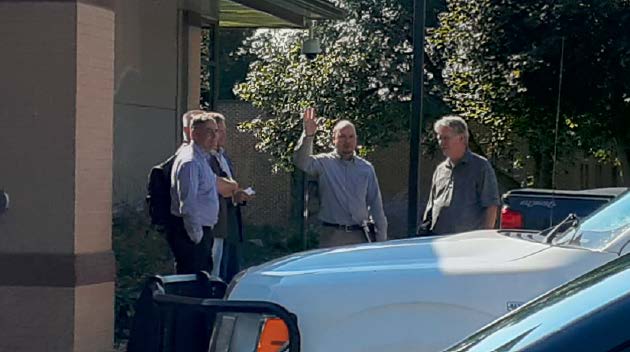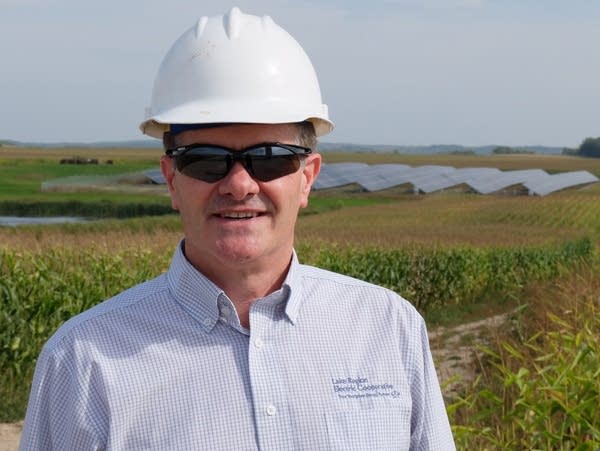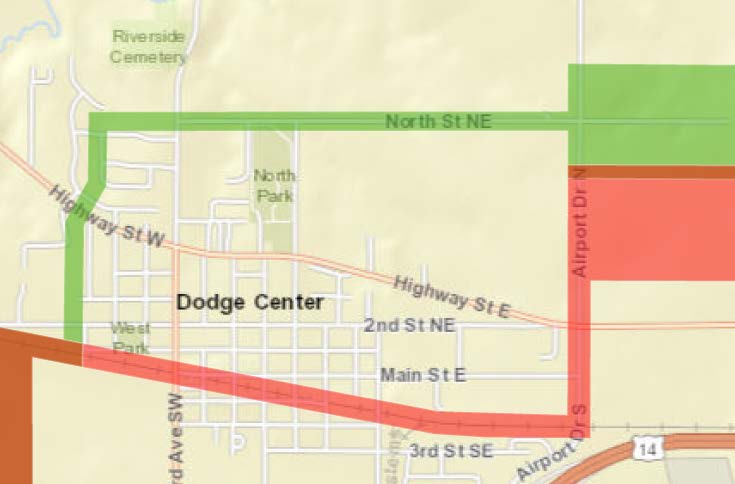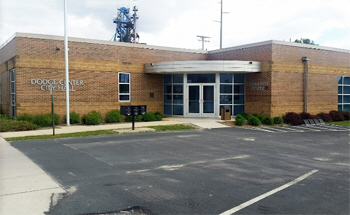PPSA Annual Hearing NOW
November 20th, 2020

RIGHT NOW! It’s the PPSA Annual Hearing… sigh… here we go again.

Go to webex, Event # 146 311 2620. The powerpoint slides will be here (and will also be filed on eDockets).
To be able to comment, you have to get on the phone 866-609-6127, Conference ID: 4449079, and to comment, you need to press #1 and get in queue.
Here is the Commerce info about this year’s projects:
And for the record, folks, note that wind is not exempt from many of the parts of the PPSA:

AFCL appeals PUC denial of EAW Petition
March 20th, 2020

On Wednesday, Association of Freeborn County Landowners filed an appeal of the Public Utilities Commission’s denial of AFCL’s Petition for and Environmental Assessment Worksheet. It was mailed Certified Mail yesterday, as required by statute, and today, filed on the PUC’s eDockets:
The PUC really screwed this up, in so many ways. Granted there are few Petitions for EAW to the Commission, and Commission staff may not be familiar with EQB rules and process. However, in the only other Petition for Environmental Assessment Worksheet/EIS, they denied a Motion and then a Petition for EAW forwarded by the EQB, and it was sent back to the Commission by the Appellate Court:
In the Matter of Minnesota Power’s Petition for Approval of the EnergyForward Resource Package
Lesson not learned. We’ve been trying to get environmental review of wind projects for how long now, particularly given the demonstrable impacts, actual and constructive notice, beyond the “potential” for environmental impacts. Bent Tree noise excedences and landowner settlements? What more is needed?
Bent Tree Order filed by PUC
In the Staff Briefing Papers, which is staff’s recommendation to the Commission, over and over it was said that the Petition was insufficient because there were not 100 signatures, but there were 380+ signatures! In the Staff Briefing Papers, over and over it was said that the Commission could declare the Petition insufficient, when it is NOT the Commission’s job to address sufficiency, that was already determined by the Environmental Quality Board, which validated the Petition and forwarded it to the Commission for action! Read the Briefing Papers… really, it’s that absurd:
I fired off a letter requesting correction, which never happened:
And even after denying AFCL’s Petition, they went further, and provided “notice” in an email to the EQB that the Board had made its decision:
And that “notice” was published in the EQB Monitor on February 18, 2020:
And yet to this date, they’ve not filed an Order or the Record of Decision on this decision! WHAT?!?! Yes, really!!
I’d sent a letter to the EQB about the Commission’s failure to file the Order and Record of Decision nearly a month ago:
STILL NO ORDER OR RECORD OF DECISION. There are no Findings of Facts to explain, to support, the Commission’s decision. I guess it’s harder to make them up than staff thought?!?!
Meanwhile, the appeal deadline of a decision on an EAW Petition is 30 days after the notice is published in the EQB Monitor. Minn. Stat. 116D.04, Subd. 10. It’s kind of hard to Appeal a decision without the necessary documents, so I can guess that’s one more reason the Commission has chosen not to file! Oh well… ONWARD!
Prior posts on AFCL’s Petition for Environmental Assessment Worksheet:
Freeborn EAW – more time!
EQB forwards EAW Petition to PUC
Petition for EAW – Freeborn Wind
Juhl in the news
September 22nd, 2019

Remember the Juhl Energy permit fiasco in Rock County earlier this month?
Rock County CUP granted
Now another Juhl project in the news, featuring Dan Juhl, who says he’s retired. HA! Doesn’t look like it… [After I published this, found another in the STrib, “Minnesota wind-solar hybrid project could be new frontier for renewable energy,” yup, “retired” guy on a big PR push!]
FYI, yes, distributed generation is where it’s at, siting small projects near load means that no new transmission is required, but because the massive transmission build-outs of CapX 2020 and MISO’s 17 project MVP portfolio have been built, well, it’s a little late.
BTW, Dan Juhl was present at the September 8, 2001 meeting at the Dinkytown Loring, after the first of Xcel’s 345kV transmission lines was proposed (Search for PUC Docket 01-1958) where Beth Soholt and Matt Schuerger asked a bunch of likely intervenors, “What would it take for you to approve of this project?” They never answered my question of what they were getting to promote it, but Matt Schuerger sure did get pissy and flustered and threatened to stomp out of the meeting! I did find documentation the $4.5 million (2001) and $8.1 million (2003) grants for “Wind on the Wires,” at that time a program of the Izaak Walton League. Clearly they got at least that much, and from other sources they got more, who knows how much… And all those transmission projects went through…
Anyway, here’s the recent report on a new project, from MPR:
New power generation: Rural co-op makes bet on wind, solar hybrid
The electricity we use is often generated hundreds of miles away. Dan Juhl wants to keep it local.

To prove his theory, Juhl’s company — Juhl Energy — has built what he calls the first hybrid generating system in the country.

A smaller scale for energy resilience

A customer in co-ops
****************************************
New Power Generation? Just saw the reincarnation at the Sheldon last year…
Oh… nevermind…
Rock County CUP granted
September 11th, 2019

Here they are, the two County Attorneys bookending the three developer reps, probably congratulating themselves on the County’s granting of the “Juhl Energy Development in partnership with Agri-Energy/GEVO” Conditional Use Permits for Sections 17 and 19 in Rock County.
What’s the big deal? Well, let’s start with the application, which was “fluff” — incomplete to put it mildly, and yet it was forwarded to the Planning Commission, a hearing was held without necessary information and documentation, and then it went to the County Board. Really, no exaggeration. Here’s the full board packet:
And what’s odd about this? The “conditions” proposed in the Board packet:

These are things that are to be included with an application, and if not, the Ordinance says that the application is not complete. FYI, this Ordinance was adopted in 2018, but is NOT posted on the County’s Website with the other Ordinances — really — check the link. WTF? Here it is (the County Attorney sent me a pdf, but it was only the even pages! Another WTF! Thankfully a little birdie sent the full Ordinance.):


NOTE in the heading: “An application to the County for a permit under this section is not complete unless it contains the following…” with all those 1-19 requirements constituting “the following.”
Take another look at the “application” in the board packet, two “applications” and a total of 10 pages! What a farce.
On behalf of the Jarchows, I’d sent a letter to the County Attorney, Administrator, and Zoning/Land-Use Administrator, and the County Board, laying out the problems, particularly stressing the egregiously incomplete application, together with an Affidavit of John Jarchow explaining their concerns with the potential nuisance coming to their property, a pre-existing permitted use:
And a Data Practices Act Request:
On to yesterday’s meeting. The County Attorney admitted that the Board had only the materials of the posted pack in front of them. As to the many missing items necessary for a complete application, one Commissioner asked about the Ordinance requirement of completeness, and the County Attorney said (not exact quote, but close) at least twice:
Oh, I wouldn’t be concerned about what the Ordinance says.
Really… I’d reminded the Commissioners of their Oath of Office, and I wonder if they thought about that. What’s the point of an ordinance if it’s ignored by the Board, the Planning Commission, and the Zoning Administrator who referred that incomplete application forward?
There were unstated claims that the biofuel plant needs this project to be able to sell to a California company. There’s a deadline approaching as the developers say this will be operational by year end.
IF THIS PROJECT IS SO IMPORTANT TO THE PLANT, AND TO THE COMMUNITY, why would the developer submit such an inadequate application? It’s on them, if they want to grease the skids and make it sail through, to do it right. But they didn’t.
Why would the Zoning Administrator forward such an inadequate and non-compliant application to the Planning Commission to review? Why would the Planning Commission hold a hearing and recommend it be approved when there is no record on which to base its “Findings.” Why would the County Board approve a CUP with so little record, and make a decision that has no record to support it? Why would the County allow a developer to put it in this position?
It’s on the developer to provide a complete application. If this project is so important, why would a developer make this strategic decision not to provide what’s required in an application?
Because they could? Because they couldn’t/can’t provide the information required? Because they knew the County wouldn’t make them follow the County Ordinance?
“Oh, I wouldn’t be concerned about what the Ordinance says.” Don Klosterbuer, Rock County’s County Attorney
Follow up Data Practices Act Request #2:
Dodge Center Xmsn – Mission Accomplished!
July 30th, 2019

The Minnesota Department of Commerce issued the Draft EIS for the Dodge County wind project, and about the “C” and “D” route proposals for a 345kV line through the heart of Dodge Center, they had this to say:

Here’s the full DEIS Narrative:
This is an example of why it’s crucial to get involved early, that comments must be made at the outset before they have moved into evaluating a proposed route, so that they can consider the input of people on the ground in the initial evaluation. Here, at least 14 people weighed in on the impacts of the C and D routes on their homes and their lives, and that message was heard.
Now’s the time for the City of Dodge Center to acknowledge that it was Tom Applegate’s efforts, alerting the City of Dodge Center and the residents effected by this project’s Route C and D possibility, helping generate the many comments that were filed, that made Commerce’s rejection of these routes a reality.

And I sure hope Commissioner Tuma acknowledges what a bad idea routes C and D were and that next time he has a routing idea, that he commits to spend at least an hour on google earth along the route to know what he’s proposing. These two proposed routes were the worst I’ve seen for a 345kV line.